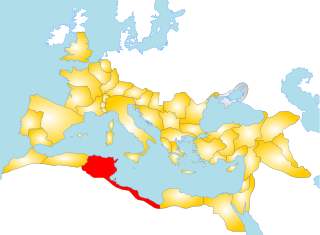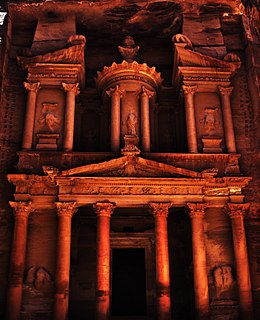| Uthman | |||||
|---|---|---|---|---|---|
| Caliph of Ifriqiya | |||||
| Reign | 1435–1488 | ||||
| Predecessor | Muhammad III | ||||
| Successor | Abu Zakariya Yahya II | ||||
| |||||
| House | Hafsid | ||||
Uthman (reigned 1435–1488) was an Hafsid caliph of Ifriqiya. His rule marked the zenith of the Hafsid kingdom.

Ifriqiya or Ifriqiyah or el-Maghrib el-Adna was the area during medieval history comprising what is today Tunisia, Tripolitania and the Constantinois — all part of what was previously included in the Africa Province of the Roman Empire.
He successfully brought on his grandfather Abd al-Aziz II's politics but in the long run he could avoid neither power struggles inside the Hafsid family nor the revolt of the southern Berber tribes.
Abu Faris Abd al-Aziz II was an Hafsid Caliph of Ifriqiya. He proceeded to further consolidate the kingdom after his father Abu al-Abbas Ahmad II had restored its integrity. A strong monarch and an orthodox Muslim he abolished some taxes he deemed incompatible with the teachings of Qur'an, using instead privateer actions against Christian shipping as a way to raise state income. He intervened against his western neighbors, the Zayyanid dynasty of the Kingdom of Tlemcen, and in Andalusia as well.
Initially he chose his provincial governors among freed slaves but when they attempted to gain some degree of independence he replaced them with members of his own family. Although some of the latter would later break out in open rebellion, yet he was able to keep the Abdalwadid Kingdom of Tlemcen under his control and also to extend Hafsid sphere of influence over the Kingdom of Fez for a brief period of time, thus making Ifriqiya the most powerful state of the Maghreb.

The Kingdom of Tlemcen or Zayyanid Kingdom of Tlemcen was a Berber kingdom in what is now the northwest of Algeria. Its territory stretched from Tlemcen to the Chelif bend and Algiers, and reached at its zenith the Moulouya River to the west, Sijilmasa to the south and the Soummam river to the east.

The Kingdom of Fez was the name given to the northern part of Morocco, from the founding of the country by the Idrisid dynasty in the 8th century until the establishment of the French and the Spanish protectorate. The kingdom had its capital at Fez (Fes).

The Maghreb, also known as Northwest Africa or Northern Africa, Greater Arab Maghreb, Arab Maghreb or Greater Maghreb, or by some sources the Berber world, Barbary and Berbery, is a major region of North Africa that consists primarily of the countries Algeria, Morocco, Tunisia, Libya and Mauritania. It additionally includes the disputed territories of Western Sahara and the cities of Melilla and Ceuta. As of 2018, the region has a population of over 100 million people.









